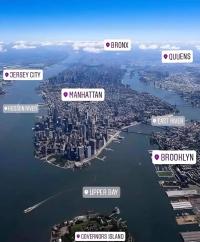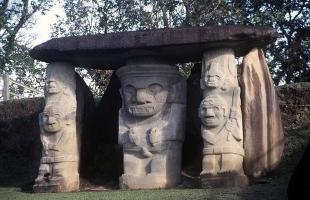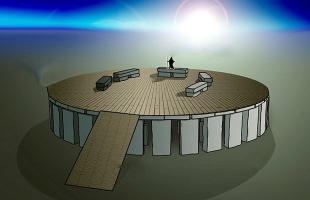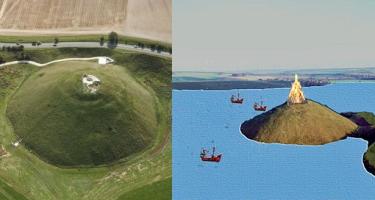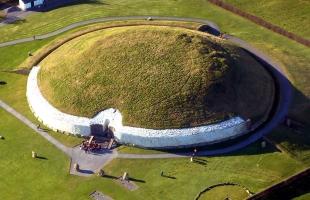Copy Link
Add to Bookmark
Report
NuKE Issue 06-002

================================================================================
Volume 1, Issue 6, May 1993
NuKE Info-Journal #6
NuKE-NuKE-NuKE-NuKE-NuKE-NuKE-NuKE-NuKE-NuKE-NuKE-NuKE
uK E-
KE "A guide to the North American Numbering -N
E- System" Nu
-N uK
Nu By KE
uK Nowhere Man E-
KE -N
E-NuKE-NuKE-NuKE-NuKE-NuKE-NuKE-NuKE-NuKE-NuKE-NuKE-Nu
% Introduction %
~~~~~~~~~~~~~~~~
Recently it was announced that the final available area code (under the current
area code format), 610, has been appropriated for use in southeastern
Pennsylvania. With this change, all standard area codes for the North
American phone system have been exhaused. While the final cutover to 610
will not be for another year, this is a landmark for our phone system. In
response to this announcement, I've decided to release various information
which I've been gathering about the North American phone system to the general
public. I hope everyone finds it of interest.
Please note that this article assumes that you know nothing about the
North American phone system, so readers from the United States and Canada
may find some of the information I present to be rather obvious (what 411
and 911 are, for example, or how various calls are placed by a customer);
please bear with me for the benefit of those in Europe, etc., as there's
some (in my opinion) very interesting information that I've uncovered about
out telephone network.
% Background %
~~~~~~~~~~~~~~
The North American phone network is the oldest in the world, yet also
uses some of the most modern techniques and equipment. Unlike the majority
of phone networks, which cover individual countries, the North American
phone system covers the United States, Canada, and most of the Caribbean
islands (such as Puerto Rico, Barbados, and so on). While calls between
various countries on the North American system are generally billed at
international rates, they are dialed like any other long-distance call.
The entire North American phone system is assigned the country code +1;
hence, it is often refered to officially as "World Zone One." World Zone
One is further divided into area codes (three digits), which cover larger
regions (states, provinces, etc.), exchanges, also three digits, which
cover towns or small parts of a larger city, and subscriber-loop numbers
(four digits), which identify a given customer in each phone exchange.
Together, these form a ten-digit phone number -- unlike many areas, North
American assigns ten digit numbers to everyone, regardless of location (in
contrast, the U.K. uses two-or-three digit city codes, an optional exchange
[for larger towns] of up to three digits, and four digit subscriber
numbers).
% Organization of area codes %
~~~~~~~~~~~~~~~~~~~~~~~~~~~~~~
The de-facto standards bureau for North America's phone network is
Bell Communications Research Inc. (Bellcore). Bellcore was formed by AT&T
after it's divestiture in 1984 and provides technical and research support
to regional holding companies. Bellcore maintains common standards for the
telephone systems, ensures a smoothly operating telecommunications
netowork, and coordinates operations during national emergencies. Bellcore
assignes all area codes and guides other aspects of the telephone numbering
scheme.
Area codes, known as Numbering Plan Areas (NPAs) in North America are
presently of the form N0X or N1X where N represents a number between two
and nine, and X is any number between zero and nine; however, area codes
ending in -00 or -11 are reserved for special purposes (see below), and are
therefore currently unavailable. Originally, central office (exchange)
codes were in the form NNX, which distinguished them from area codes, as
only area codes had a zero or one in the second digit. However, with
increased demand for phone numbers, most exchanges have changed to the NXX
format (ie. the second and third digits of an exchange code can be any
number, zero to nine). Naturally this presents problems, as exchanges
whose seconds digit is one or zero are now indistinguishable from NPAs. As
a result, most areas use "one-plus" dialing: to make a long-distance call
you dial one plus the area code plus the local number.
Area codes were initially assigned in 1947, with at least one being
assigned to each American state and Canadian provice and several being
assigned to more populous ones -- in all 86 NPAs were originally assigned.
Currently the only exceptions to this "one or more NPAs per state" are in
Canada, where 902 serves both Nova Scotia and Prince Edward Island, area
819 covers the eastern Northwest Territories as well as part of Quebec, and
area 403 covers Alberta, Yukon and the western Northwest Territories; in
addition, the 809 area code covers many locations throughout the Caribbean,
from Puerto Rico to the Bahamas to the Virgin Islands to Jamaica. (Note:
Midway Island and Wake Island, two U.S. posessions in the Pacific Ocean
have just been added to area code 808 [Hawaii]. Prior to this time, they
were not direct dialable.)
The original proposal suggested that the 86 area codes be assigned in
a semi-regular pattern (for example, Canada would have been 915, 914, 913,
916, 917, 918, 919, 910 from east to west by province). This plan was
modified to eliminate the confusion caused by "similar" area codes
adjacent to each other. A state initially assigned a single area code
would have zero for it's NPAs middle digit, while a state with more than
one area NPA would have a one as a middle digit. Areas where more inward
calls were expected (major metropolitan areas like New York City) received
"short pull" area codes like 212, because the dialing time would be shorter
(remember, this was in the days of rotary phones) and the mechanical
switching equipment would be tied up for shorter periods. For example, New
York City received 212 (a total of five pulses), while Chicago and Los
Angeles, the next two most populous areas in the U.S., received 312 and 213
(six pulses each), respectively. This went all the way on down to NPA 809,
the Caribbean, which required 27 clicks of the rotary dial and would
presumably be dialed least frequently. Of course, with the dominance of
DTMF dialing, a region's NPA is no longer significant... (As a side note,
New Jersey was originally given the area code 201, the smallest
[numerically] area code, because Bellcore is headquartered there.)
Since the initial assignment, there have been numerous area code
splits, where certain telephone exchanges are removed from an area code and
placed into a new code. Since 1980 there have been at least twenty such
splits. The first split occured in the early 1950s, and the final split
will occur when 610 is created in 1994.
In the U.S., NPAs were further subdivided into LATAs (Local Access
Transport Areas) after the breakup of AT&T in 1984. Before this time,
there was no real definitation of what was local and what was
long-distance; in order to be fair to communities on state borders, etc.
(imagine paying LD charges to call five miles away!), LATAs were created
that encompassed "populated areas with common calling needs." All calls
made within a LATA are handled by the common local telephone company (New
York Telephone, Pacific Bell, Illinois Bell, etc.), which currently
subscribers cannot choose (this will probably change in the next few
years), while all calls between LATAs are handled by a customer-chosen
long-distance carrier (AT&T, MCI, Sprint, etc.) and are subject to federal
regulation. A LATA may cover a small area or a whole state; they are
usually contained within one NPA, but may cover several (e.g. the Chicago
LATA covers all of area codes 312 and 708). As of 1991 there were 196
LATAs (and I believe this will not change). Canada does not currently have
a LATA system, though it may soon develop one. LATAs are assigned codes,
but these are only for billing purposes, and are not dialed by the
customer; in fact, LATAs are transparent to the caller, except for
routing/billing purposes.
Direct Distance Dialing (the ability to place long-distance calls
without going through an operator) first was implemented on
November 10, 1951 in Englewood, New Jersey, USA, though it was not
wide-spread until the 1960s. There was early use of 11X+ codes for
long-distance dialing, but eventually 1+ long-distance dialing became
standard. As stated, area codes were assigned in 1947, five years before
anyone would need one. Why was it done? I'm not sure. It can only be
assumed this was done for 1) future planning and 2) the operators' benefit.
(Another odd thing is that 0+ [operated-assisted] dialing became available
in 1960, almost ten years after direct-dialing was introduced. Why did
they bother? Beats me.)
Surprisingly enough, a few tiny areas within the United States and
Canada are *still* not direct dialable, but they're in remote regions.
This includes some isolated ranches in the Texas desert (Bar J Ranch,
Double B Ranch, etc.), bordellos and truck stops in Nevada desert areas
(Amargosa, Corncreek, etc.), and some wilderness towns in California
within the U.S., and remote resorts in Ontario (Kingfisher Lake and Deer
Lake, for example) and isolated arctic villages in the Yukon and NWT
(Redknife, Taglu, etc.), in Canada. These areas must be serviced via
radiophone, so an operator is required.
% Non-standard area codes %
~~~~~~~~~~~~~~~~~~~~~~~~~~~
Certain area codes are not available for normal purposes. These can
be generally subdivided into two categories: "Service Access Codes"
(SACs), NPAs ending in -00, or "11" services, NPAs ending in -11.
Service Access Codes are employed like normal access codes (and are
dialed normally), but are not assigned to customers in any one geographic
area. Rather, SACs are used for Wide-Area Telephone Service (WATS) by
business. Currently, only four SACs are employed, and only three can be
dialed by normal customers at the present.
600
~~~
The 600 NPA is currently reserved for Canadian TWX systems
(see below) and ISDN usage. To my knowledge, it is not dialable
by normal customers. (In fact, I've seen it used in TV shows
for 800 numbers like 555 is used for local numbers [ie: call
1-600-FLO-WERS for a fake flower company, since the real
1-800-FLO-WERS already belongs to FTD Florists, who would
probably not appreciate hundreds of crank calls tying up their
business line].)
700
~~~
1-700 numbers are used for Group Access Bridging (GAB) lines:
teleconferencing, EasyLink 700 service, chat lines, etc. (Note
the cute little acronym...who says Bell doesn't have a sense of
humour?) The most famous 700 service is Alliance<tm>
Teleconferencing from AT&T, but there are many other chat lines
available to those with lots of money to burn. The 700 exchange
is also used for AT&T EasyLink 700 service, where a customer
gets a phone number that can be rerouted to any phone he visits.
For example, if a businessman is traveling around the country,
at each hotel he stays at he can dial up an 800 number, enter
his phone number and PIN, then the current phone number, and all
calls to his EasyLink number ring on the phone line he entered;
now the office always knows which number he can be reached at.
In addition to GAB/EasyLink services, the 700 NPA is
sometimes used to allow intra-LATA calls to be placed via your
long-distance carrier. By dialing 1-700-NXX-XXXX you are really
calling NXX-XXXX but being billed by your long-distance company
instead of the local telco. Not all LD services offer this,
though (AT&T, for one, does not, but Telecom*USA does). To find
out if this is available from your carrier, either call the
long-distance operator, or try calling yourself via the 700 NPA
(if it's busy [or your call-waiting beeps] you can use the 700
area; or, you can call your other line, if you have one, or a
friend to test this out).
800
~~~
800 service was pioneered by AT&T in the 1960s and has since
become a world standard, with most countries adopting the 800
area code for toll-free dialing. 1-800 numbers are used by
businesses, and, increasingly, residential customers, as a
service to clients (or, in the case of home users, to college
students, truck drivers, and others who need to call home a
lot) -- the business decides which areas it wants to provide 800
access in (home state/province only, nearby states/provinces,
a whole region of the country, a whole country, U.S. and Canada,
or even international, all at increasing cost), and people in
those areas who call the 800 number are not billed for the call:
the business is. Each 800 number maps to a normal phone number,
and the caller is billed normally for the call, however just
before the bill is totaled, any 800 calls are removed from the
bill and instead billed to the 800 line's owner. The owner of
the 800 line pays a startup charge, a monthly fee, and a fee for
every fraction of an hour that the line is in use. (Note that
as of May 1, 1993 800 phone numbers belong to the business
that operates the line and *not* the phone company. This is a
step towards the day where every customer will get a permanent
phone number no matter where they move, which company they use,
etc. This also means that long-time customers are finally free
to leave AT&T without losing their old phone numbers...)
Before 800 service, local businesses could provide toll-free
service with "Zenith Numbers" (ie. ZEX-XXXX under the exchange-
name system). Since "Z" isn't on the phone dial, the caller had
to have an operator place the call, which was then billed to the
business. (This service is still in use in Canada.)
900
~~~
1-900 numbers are infamous as kinky phone sex lines, rip-off
astrological recordings, etc.; however 900 service is actually
much like 800 service... Nothing about 1-900 service dictates
that the caller be charged for the call (though he invariably
is) -- the key difference between 800 and 900 service is that
900 lines have much higher call-handling capacity (some 900
lines can receive hundreds of thousands of calls at once without
jamming!). In addition, 900 service allows the provider to
make the caller pay a portion of the charges. As a result, 900
lines have become pay-per-call lines, where the user is charged
$0.25-$50.00 plus per-minute costs to listen to pre-recorded
messages, chat one-on-one with some cheap whore, etc.
The other group of special "area codes" are the N11 series of NPAs.
These numbers are not true NPAs, but rather numbers that Bell has assigned
to certain key services (police/fire, directory assistance, etc.) as a
service to customers -- you just dial the three digits (or 1+ the three
digits in some areas), and the call is quickly completed. The -11 codes
include:
011
~~~
011 is the international dialing prefix in World Zone One.
(Unlike most of the rest of the world, which uses 00 for
overseas calls, North America uses 011.)
211
~~~
This code is no longer in service (to my knowledge), but in
"the old days," before Direct Distance Dialing (ie. pre-1960s),
211 called up the AT&T long-distance operator, who would place
your long-distance call for you. Naturally, this is no longer
needed (operator-assisted calls are placed via the long-distance
operator at 00), so 211 is generally not used in most areas (in
a few NPAs 211 is a ringback).
411
~~~
411 reaches local directory assistance (as if you dialed
555-1212). This operator only gives numbers within your NPA
(sometimes in neighbouring NPAs, too); to find a number in a
different area you have to dial NPA-555-1212.
511
~~~
511 is generally unused, though in a few places it is used
for ringback.
611
~~~
611 reaches your local telephone company's repair office.
You provide the man/lady with your error, and for an outragous
fee ($1.15/minute in my area), they'll send out a lineman to
(hopefully) find and correct the problem.
711
~~~
The 711 code is not always available, and it's actions
depend on where you live -- in British Columbia, for example,
0+711 is used for mobile service, while in Illinois 711 reaches
the emergency bureau as if you dialed 911 (see below). In a few
areas 711 is the ringback number.
811
~~~
In some areas 811 dials the local telco's business office.
This code was more universal in the past, as now most areas
have moved the business office to a 1-800 number (leaving 811
unused).
911
~~~
The world-famous 911 code calls up a special emergency center
where your call is processed and forwarded on to the appropriate
agency (police, fire department, ambulance, etc.). The 911
operators automatically receive your name, phone number, address
and other information when you call (computers and ANI do the
magic), so be wary of trying to mess with this service (not a
good idea anyway, as 911 performs a valuble public service).
911 is not available in all areas (mostly rural areas), so this
code isn't universal.
% Unusual area codes %
~~~~~~~~~~~~~~~~~~~~~~
At one time, several area codes were used for non-standard purposes.
These deserve some special attention.
Area codes ending in -10 used to be TWX (TeletypeWriter eXchange) area
codes. (TWX was an old system used in the days before faxes and modems.
Teletypewriters communicated similar to terminals -- a person on the
transmitting end would type a message, and a printer on the receiving end
would print it out. This is how telegrams were sent.) TWX area codes were
not normally dialable from a regular phone, to my knowledge, and were
reassigned to regular telephone service as the demand for new NPAs
increased and TWX service was eliminated (around 1990). The TWX NPAs
served the following regions:
410 - United States, northeastern region
510 - United States, east of Chicago
610 - Canada [now located at NPA 600]
710 - United States, southeastern region
810 - Mexico
910 - United States, from Chicago westward
The other set of area codes that deserves mention are the Mexico
access numbers. Mexico is not integrated into World Zone One, and is
assigned the country code +52. However, a large number of calls are placed
to Mexico from North America, so in the days before International Direct
Distance Dialing was universal, AT&T assigned three special NPAs for
Mexico. These were not NPAs in the true sense: they mapped to Mexican
city codes and local numbers. In addition, they were not dialable from
outside of the U.S. and Canada. By 1990 IDDD was available from everwhere
in North America, so on February 1, 1991 the codes were released for use as
true area codes. These codes were as follows:
706 - Northwest Mexico (Tijuana area) [now northern Georgia]
903 - Southwest Mexico (Guadalajara area) [now northeast Texas]
905 - Mexico City area [soon to be southern Ontario]
As you might have noticed, these numbers convieniently map to Mexican
phone numbers: 706 was really for 70-6X-XXXXXX, 903 was for 90-3X-XXXXXX,
and 905 was for 90-5-XXX-XXXX. All of these map to ten digits, an NPA
and local number in World Zone One...
The 909 area code was used at one time for the Telenet Communications
Data Network, now known as SprintNet. When area codes became scarce, Bell
took back the area from Telenet, giving it an "interchangeable" area code
instead (see below); I'm not sure which area they received. 909 was
chosen, naturally, because it takes the longest ammount of time of any area
code to dial on a rotary phone (28 clicks). Since Telenet was to be used
by computers, which had TouchTone dialing, this didn't matter... 909 is
now being used by Riverside and San Bernadino Counties in southern
California (formerly part of the 714 area).
Finally, what about the 710 area code? 710 is reserved for telephone
company and U.S. government purposes, but little is known beyond that.
It *cannot* be dialed from a normal telephone. Most operators deny its
existance. Which agencies use it? Why? Is this NPA for special "secured
lines?" Is it even used at all? If anyone has more information about this
area code, please let me know.
% Area code statistics %
~~~~~~~~~~~~~~~~~~~~~~~~
Which states/provinces have the most area codes? Here are the top five:
1. California, USA -- 13
2. New York, USA/Texas, USA -- 9
3. Illinois, USA -- 6
4. Ontario, Canada/Pennsylvania, USA -- 5
5. Florida, USA/Ohio, USA/Michigan, USA -- 4
(Note: After 416 splits, Ontario will be tied with Illinois for 3rd
place with six area codes each; Michigan will move up to number four with
five NPAs when 313 finally splits. At least ten states and one province
have three NPAs.)
Which area codes have the most exchanges in them? The top ten are:
1. 212 (New York, USA) -- 705*
2. 205 (Alabama, USA) -- 693
3. 919 (North Carolina, USA) -- 691*
4. 313 (Michigan, USA) -- 688*
5. 416 (Ontario, Canada) -- 680*
6. 215 (Pennsylvania, USA) -- 665*
7. 602 (Arizona, USA) -- 657
8. 206 (Washington, USA) -- 649
9. 708 (Illinois, USA) -- 644
10. 713 (Texas, USA) -- 636
(Note: Starred exchange numbers mean that the NPA is scheduled for
a split by 1994 [212 is moving some exchanges to 718 right now].)
Which area codes have the fewest exchanges? The top ten are:
1. 807 (Ontario, Canada) -- 105
2. 906 (Michigan, USA) -- 117
3. 302 (Delaware, USA) -- 129
4. 413 (Massachusetts, USA) -- 135
5. 401 (Rhode Island, USA) -- 141
6. 307 (Wyoming, USA) -- 171
7. 607 (New York, USA) -- 176
8. 719 (Colorado, USA) -- 179
9. 802 (Vermont, USA) -- 181
10. 506 (New Brunswick, Canada) -- 182
(Note: 917 [New York pager/celluar service] was omitted because it
is growing too fast... It had 104 exchanges as of January, but by
April is had 124. By now it surely has more. Besides, I don't like to
consider it a real area anyway.)
(All exchange data is from April 15th, 1993, so this may have
changed by now.)
Which area codes have the most unlisted numbers? Well, nine out of
the top ten area codes are in California. While most people would probably
quickly attribute this to the infamous "California" attitude, it's most
likely due to the fact that Pacific Bell offers the lowest rates for
unlisted numbers ($0.30/month in California, compared to $1.50/month in
Chicago, $1.88/month in New York, and $4/month in Idaho). The ten NPAs
with the most unlisted numbers (in percent of total numbers) are:
1. 702 (Las Vegas, Nevada, USA) -- 64.6%
2. 209 (Freson, California, USA) -- 63.1%
3. 213 (Los Aneles, California, USA) -- 61.7%
4. 510 (Oakland, California, USA) -- 61.6%
5. 408 (San Jose, California, USA) -- 60.2%
6. 916 (Sacramento, California, USA) -- 59.8%
7. 909 (Riverside, California, USA) -- 57.7%
8. 818 (Anaheim, California, USA) -- 57.1%
9. 619 (San Diego, California, USA) -- 56.5%
10. ??? (Bakersfield, California, USA) -- 55.2%
Finally, which areas were considered "the most important" when area
codes were handed out; in other words, which areas were assigned the NPAs
which required the fewest number of clicks on a rotary phone? The top five
are:
1. New York City -- 5
2. Chicago/Los Angeles -- 6
3. Dallas/Detroit/Pittsburgh -- 7
4. Philadelphia/St. Louis/Boston/Austin -- 8
5. Cleveland/Syracuse/Milwaukee/Minneapolis -- 9
(This assumes the original area codes as assigned in the fifties, ie.
212 covers all of New York City, etc.)
% Assignment of exchanges %
~~~~~~~~~~~~~~~~~~~~~~~~~~~
When the telephone was first introduced, central-office operators sat
at switchboards, completing connections in response to spoken requests.
There were few enough phone lines so the operator simply knew where to plug
in for the call. That began to change during an outbreak of the measels in
Lowell, Massachusetts, in 1879. The town doctor, feared that if all four
operators fell ill, their substitutes would have trouble connecting people
unless every line got a number. The idea quickly caught on.
In the 1880s telephone service quadrupled in the nation's settled
areas. Cities soon had not only a central office and phone numbers but
exchanges in other parts of town, so callers now asked for Main or
Central plus the subscriber's several-digit number. Branch exchanges
usully took their names from their relative geography, street names,
or names of neighborhoods. Bell devised phonetic tests to help make sure
only easily understood names were chosen. When neighborhood and street
names started to run out, the Bell System recommended new names, like
Evergreen, Lakeside, Poplar, and Walnut.
By the time dialed calling was introduced in the Bell System in 1921
the exchange name were so ingrained that Bell Telephone kept them on.
William G. Blauvelt of AT&T had divided the alphabet into groups of
three letters for each of the dial's openings in 1917. Z was omitted
because, well, it was the last letter; that left an odd letter to
eliminate. It came down to Q and X, the two most infrequent letters in
English, but Bell finally decided to keep X, since Q could only be followed
by U, limiting the number of possible exchange names. And because a single
phone-number pulse could be transmitted when the receiver lifted or the
finger wheel was jarred, no calls would be initiated until a pulse signal
of at least two was received; thus the number one got no letters attached
to it.
Dialing swept the nation, but only large cities used exchange name
dialing; in small towns one still had only to dial a three- or four-digit
number. (As a side note, why was it that subscriber numbers were never
more than four digits? It's a carry-over from the early days before
direct dialing. It was determined that an operator could not reach more
than 10,000 plugs without getting up from her seat...)
Seven-digit numbers became standard only after World War II. New York
City had pioneered them in the early 1930s when it began inserting an
"exchange-designation number" after the two-letter exchange prefix (for
example, you used to dial RA6-9999 for the RAndolph exchange in Chicago,
with six as the "exchange-destination number"). By the mid-1950s all other
major cities were converted to this system, replacing such combinations as
Chicago's three letters and four digits, Cleveland's two letters an four
digits, and Dallas's one letter and four digits. In 1961 Bell Telephone
announced that it would phase out exchange name dialing city by city.
Pittsburgh and Cincinnati began converting in 1962; Philadelphia and
Seattle were the last to change, in 1978. The classic combiation of two
letters and five numbers was a fully national standard for less than a
decade.
The two-letter-five-number system was also used in Canada, though I'm
not sure how widely. Vancouver, British Columbia was one city to use
this system, though I don't how many others did. (Anyone have any
information about this?)
All-number calling was introduced for several reasons. Mainly there
weren't enough workable letter combinations. Exchanges like 571 had
stayed unavailable because letters like JKL (5) and PRS (7) wouldn't
combine. All-number calling also eliminated hard-to-spell exchanges,
prevented mix ups between similar leters and numbers like O and 0, and made
possible direct dialing from Europe and other parts of the world, where
most phones never had letters on their dials.
For the benefit of those outside of North America, I have included
a diagram of how our phone pads are layed out and which letters are
assigned to which key:
ÚÄÄÄÄÄÄÄÂÄÄÄÄÄÄÄÂÄÄÄÄÄÄÄ¿
³ 1 ³ 2 ³ 3 ³
³ ³ ABC ³ DEF ³
ÃÄÄÄÄÄÄÄÅÄÄÄÄÄÄÄÅÄÄÄÄÄÄÄ´
³ 4 ³ 5 ³ 6 ³
³ GHI ³ JKL ³ MNO ³
ÃÄÄÄÄÄÄÄÅÄÄÄÄÄÄÄÅÄÄÄÄÄÄÄ´
³ 7 ³ 7 ³ 8 ³
³ PRS ³ TUV ³ WXY ³
ÃÄÄÄÄÄÄÄÅÄÄÄÄÄÄÄÅÄÄÄÄÄÄÄ´
³ * ³ 0 ³ # ³
³ ³ OPER ³ ³
ÀÄÄÄÄÄÄÄÁÄÄÄÄÄÄÄÁÄÄÄÄÄÄÄÙ
(Note: the zero key is marked "OPER" because dialing zero will summon
the local operator. Zero and one have no letters officially assigned to
them. Some people like to claim that one is "Q" and zero is "Z", but I
have never seen one or zero used in that fashion before.)
Each area code has certain exchanges set aside for special purposes.
These exchanges are:
555
~~~
Local directory assistance. Dialing NPA-555-XXXX will get you
directory assistance for the given area. This is why most phone
numbers in movies and TV shows are 555-XXXX or KLondike-5 XXXX...
People whose numbers were used in movies, etc. complained to the
studios after getting hundreds of calls from losers asking for
James Bond or whatever. (One family's phone number appeared on the
cover of a heavy metal album and is now suing the band after
receiving thousands of threatening phone calls from fans.)
This use of 555-XXXX is purely a voluntary thing; a long time ago
Bell was able to reserve certain exchanges throughout the country
that producers could safely use, but with a shortage of telephone
exchanges they had to stop this practice.
950
~~~
Used to access other long-distance services. This is called
Feature Group B equal access. To use the service you call their
950 number (which is a free call), then enter your multi-digit PIN,
then dial the number you wish to call. Almost all areas now have
Feature Group D service (Equal Access), where you select an
alternate carrier and then use it normally, like you used to use
AT&T (ie. just dial 1-NPA-NXX-XXXX). Currently 950s are only used
in the U.S., but they are reserved for future use in Canada and
will probably soon be utilized, given the recent Unitel decision.
Currently Canadian callers must use local dialups for independent
long-distance carriers (called Feature Group A, long phased out in
the United States). (In the U.K. Mercury uses a similar setup.
Mercury phones are equiped to pulse dial 131, enter the customer's
ten-digit PIN touch-tone, then enter the number they're trying to
call, all automatically. This is sort of like 950 access...)
958 and 959
~~~~~~~~~~~
These exchanges are usually reserved for plant testing. In some
areas they may be used for normal service. In most areas other
exchanges are used for testing, too.
976
~~~
976 numbers are like local 1-900 numbers. They are billed on
a per-minute basis, but are usually much less expensive than 900
calls (not more than a dollar or two at most per minute). 976
can usually be blocked (like 900 numbers), sometimes for a fee.
In some areas the telephone company has other exchanges set aside
for 976-type usage; for instance in Pennsylvania the telco has
reserved the 556 exchange for this purpose, and in Texas 703 is
used. Sometimes these other exchanges must be specifically
requested by the customer to be dialed (in other words they default
to blocked).
844
~~~
The 844 exchange used to be used for time (it was TIme-4 under
the old exchange-name system), but the telephone companies figured
why give away this service for free when you can charge $0.50
via a 976 number. Now time is generally found at NPA-976-1616, and
the 844 exchange is available for normal usage. (Interesting note:
in the San Francisco Bay area [408, 415, 510, 707], you can get
the time by dialing "POPCORN", billed as a local call. In New York
and Boston, the number used to be "NERVOUS.")
936
~~~
Like 844, the 936 was once used for pre-recorded messages, only
936 was used for weather announcements (it was WEather-6 in the old
days). This, like time, has been moved to a 976 service in most
places, usually at NPA-976-1212 (and they throw in obnoxious ads to
boot!). Now 936 is usually just a normal exchange.
% Phone capacity %
~~~~~~~~~~~~~~~~~~
The original design of telephone numbers was: (NBX) NNX-XXXX. In
theory, this gives:
N B X N N X X X X X
8 * 2 * 10 * 8 * 8 * 10 * 10 * 10 * 10 * 10 = 1.024 billion numbers
However, as some area codes and exchanges are reserved for special
purposes (such as 411, 555 exchange, etc), the total possible number of
telephone numbers was somewhat less.
As the exchange codes in some area codes were used up, some central
offices started using the NXX format, where the middle digit can then be a
zero or one; this began in New York and Los Angeles and is now used in
almost every area code. Now, telephone numbers look like this:
(NBX) NXX-XXXX. This gives a potential of:
N B X N X X X X X X
8 * 2 * 10 * 8 * 10 * 10 * 10 * 10 * 10 * 10 = 1.28 billion numbers
However, codes like 411 and 611 would not be assigned because they
will still be needed for services such as directory assistance and repair.
Nevertheless, some unused N11 codes like 211 may be found in some area
codes as active exchanges. It's also not a good idea to assign the home
area code (or nearby area codes), as this could cause confusion.
Going from NNX exchange codes to NXX only represents a 25% increase in
the total theoretical amount of telephone numbers, and not all area code
regions are expected to run out of exchanges.
The ultimate goal is not only to use area codes for exchanges codes,
but to use exchanges codes for area codes also. This means that telephone
numbers will ultimately look like this: (NXX) NXX-XXXX. This gives a
potential of:
N X X N X X X X X X
8 * 10 * 10 * 8 * 10 * 10 * 10 * 10 * 10 * 10 = 6.4 billion numbers
With a five-fold increase in the number of possible area codes, there
should be plenty of room to grow for some time.
% Placing calls %
~~~~~~~~~~~~~~~~~
Basically, all calls within an area code will ultimately be dialed in
one of the following ways: 1) dial seven digits; 2) dial one plus home
area code plus the local number; or 3) dial one plus the seven digit number
within area code, then wait for a few seconds to time out. One alternative
not mentioned in official documents (for touch tone phones) is to use one
plus seven digit number in home area code then pressing the pound key, with
the pound key terminating the dialing (as in international dialing).
* "1+" is generally used for direct-dialed long distance calls within
North America, especially calls outside the local area code.
Sometimes intra-LATA calls must be dialed 1-NXX-XXX or even
1-NPA-NXX-XXXX if they're outside your local calling area. Yep,
unlike almost all of the rest of the world, World Zone One uses 1 for
DDD calls instead of the internationally-standard 0.
* "0+" is used to dial operator-assisted or automated credit card calls
within North America. After 0 + (area code) + number are dialed, a
prompt tone (same tones as a dial tone, but for a very short duration)
will be issued, then one of the following actions will be taken:
1) wait for a few seconds, then an operator will come on line; 2) dial
"0" to get the operator immediately (for a collect or person-to-person
call, etc.); or 3) dial the telephone company credit card number for
billing purposes. It is unclear what will happen in the cases of
automated collect calls, as to what kinds of dialing would be standard
in that case. In my area, a computer voice system prompts you for
your name, then dials the number and says "You have a collect call
from [your three-second message]. Press one to accept the charges or
two to reject the call" (or something very close to that). Of course,
this system is open to abuse: probably the most collect calls are
made from a Mr./Ms. "Call me back at NXX-XXXX", etc... Also, this
system is only used for local calls.
* Dialing "0" and waiting will get the local area operator.
* "00" is used in the U.S. to get the operator for a default long
distance carrier. This is used as most long distance companies have
their own operators. A single "0" digit will call up the local
operator (with the local telephone company as opposed to the long
distance company).
* "01" is used for overseas calls. "01+" indicates an operator-assisted
or automatic credit card call, while "011+" indicates a direct-dialed
overseas call. "010+" is reserved for some unspecified future use.
* "10XXX+" is used in the U.S. to indicate which long distance carrier
to use in a situation known as "equal access." This allows a
telephone subscriber to select a long distance company for a
particular call. For instance, "10288+" gets AT&T (288 is ATT...),
while "10222+" gets MCI and "10333+" selects U.S. Sprint. After this
code, a 1 or 0 is dialed (to indicate direct dial or operator-assisted
call), then the number to be called. With this system you can place
a call via another carrier if they offer lower rates, etc. for that
particular call. You get a separate bill in a month or two.
10000 is not available for assignment.
10001 - 10099 are reserved for restricted purposes.
10100 - 10199 are reserved for international carriers.
10200 - 10999 are assigned to standard long distance carriers.
Canada doesn't have to worry about this code yet, though given the
recent changes in long-distance regulation, it's likely that they will
adopt a U.S.-style system soon.
* "11+" is reserved for special calling services like call-waiting
functions, etc. For instance, "1170" is used to disable the
call-waiting. The asterisk or "star" key ("*") can be used instead
of the "11" prefix on touch-tone phones. The current special calling
codes on many local telephone systems are:
*57 - call tracing request (some systems use this for call back)
*60 - call blocking activated
*61 - priority ring activated
*63 - select call forwarding activated
*66 - repeat dialing activated
*67 - call number ID blocking (must be dialed before each call)
*69 - call return activated
*70 - disable call waiting
*71 - three-way calling according to usage
*72 - enable call forwarding
*73 - disable call forwarding
*74 - modify speed calling directory entry (for 8 # service)
*75 - modify speed calling directory entry (for 30 # service)
*76 - call pickup
*79 - ring again
*80 - call blocking disabled
*81 - priority ring disabled
*83 - select call forwarding activated
*86 - repeat dialing disabled
*89 - call return disabled
% International dialing %
~~~~~~~~~~~~~~~~~~~~~~~~~
International Direct Distance Dialing (011+/01+ dialing) began in 1970
between New York and London, and has since become available in all service
areas in North America. Over 99% of the world's telephones are reachable
from the United States and Canada. According to AT&T, the only areas
which require operator assitance to reach are: Afghanistan, Burma, Cuba,
Easter Island, Laos, Niue, Norfolk Island, Somalia, Spanish Sahara, Sudan,
Tuvalu, Vanatu, Wallis and Futuna, and Yemen. From Canada, calls can
direct-dialed to Cuba and Burma (the U.S. government doesn't permit any
calls to there, even though the capability exists). North Korea cannot
be dialed at all, period, even with an operator; not only do they have a
primitive phone system and are politically shunned, they also just changed
everyone's phone number, so no one can dial in and spread evil Capitalist
propaganda. (There are no phone books in North Korea -- that's classified
information. Seriously.)
As you can see, most of the non-direct-dialable numbers are small
Pacific islands; these calls aren't direct-dialable because the only trunks
to these countries are generally to Australia or other Pacific countries,
and AT&T is only allowed to use the trunks for an hour or two each day.
Other countries just have phone systems in such awful condition that they
can't be dialed easily (Laos, Sudan, etc.), while Cuba and Burma are banned
in the U.S. for political reasons. Within a few years, the capability to
direct-dial all telephones in the world should exist. Already IDDD exists
to certain research bases in Antarctica, Mongolia, and other places you'd
never even *want* to call. It's only a matter of time, now...
% The future of World Zone One %
~~~~~~~~~~~~~~~~~~~~~~~~~~~~~~~~
On January 1, 1995 all telephone systems are expected to change their
equipment over to allow for new "interchangeable" area codes (area codes
whose second digits are not one or zero). This date was originally to be
July 1, 1995 but was moved up to January because of increasing demand for
phone numbers due to fax, modem, and cellular phones.
The initial set of new area codes will take the form NN0, or those
numbers ending in zero. This means that areas codes that do not have
exchanges ending in zero (or only a few NN0 exchanges that could be
renumbered) can still be able to tell the difference between an exchange
and an area code by looking at the first three digits. The new NN0-type
area codes will be assigned starting with these first few codes (in order):
260, 480, 520, 590, 650, 220, 250, 490, 660, 680, 720, 730, 850, and 940.
The 970 NPA will be reserved for phone testing purposes, and will not
become and area code. New area codes may be assigned as follows:
geographic codes will use N2X and N3X, N4X through N7X will be used for
expansion, and N8X and N9X will be used for non-geographic codes. (In this
notation N represents a digit from 2 to 9, and X represents any digit.)
Thus, area codes like 223, 734, or 520 would be geographic codes under the
proposal, while area codes like 987, 294, or 780 would be non-geographic
(like 700/800/900 numbers are now). This middle digit of the area code is
referred to as the "B" digit, thus the B digit indicates a new geographic
or non-geographic code. As the initial set of geographic or non-geographic
codes are used up, expansion takes place by using the nearest available
expansion set. Thus, N4X codes are next in line for geographic codes
expansion, while N7X codes are next for non-geographic expansion.
Ultimately, expansion to more digits will be needed in the distant future,
and it is proposed that either the N5X or N6X codes can be used to provide
for "expansion" codes to set up a numbering plan of more than ten digits.
In addition to the new area codes, the Carrier Identification Code
format of 10XXX+ will be expanded to 101XXXX+ in the near future, because
nearly all of the 10XXX codes are assigned at this time.
On December 31, 1996 (referred to as "Time T"), there will be an
expansion of the maximum international number length from twelve digits to
fifteen digits, according to a CCITT recommendation. Already one country
has moved to fourteen digit numbers, and more such plans are likely in the
future; in order to continue to permit direct dialing to such countries,
the maximum number of digits allowed for IDD calls must be increased to at
least fifteen.
Also, it has been recommended that the North American phone system
evolve to ten-digit dialing for station-to-station (network based) calls,
including local calls. The idea is to start in the metropolitan areas
using "overlay" NPA codes like New York and perhaps other areas soon. It
is also proposed that 1+ be eliminated as a long-distance access prefix; in
other words, any call in North America would consist of ten digits, whether
local, long distance, or to an 800/900-type service. In effect, everyone
will have a ten-digit phone number, instead of a seven-digit phone number
and a three-digit area code, as under the current plan.
Who will get the first interchangeable area code? No one knows for
certain, but by observing number of exchanges in each area we can make some
educated guesses. Alabama (205) and Arizona (602) both will need new NPAs
very soon, as will 206 (western Washington), 703 (Houston area) and [gasp!]
708 (suburban Chicago). One of these five areas will almost certainly get
the first code. Some claim it will be 708... An Illinois Bell operator
denies this (but remember, this is an IBT operator here, not someone who
knows what they're talking about). There is also a rumour that the next
split will occur somewhere in Florida, though this seems unlikely as none
of Florida's NPAs are running out of numbers and other areas need them much
more urgently. Only time will tell.
% Conclusion %
~~~~~~~~~~~~~~
Well folks, I hope this information has been of use to you. The
telephone system can be a fascinating thing (and I'm not just talking about
phreaking here), and I encourage you to learn more on your own. Also, look
for more articles about the world telecommunications network in future NuKE
InfoJournals. I'd also like to take the time to give credit where credit
is due: some of the information in this article was gleaned from the
comp.dcom.telecom newsgroup on the Usenet and the Telecom Digest archives
at lcs.mit.edu, with other bits coaxed from IBT and AT&T operators,
borrowed from other text files, and written from personal knowledge and
outside research. Enjoy, everyone.
Nowhere Man/NuKE
===============================================================================









